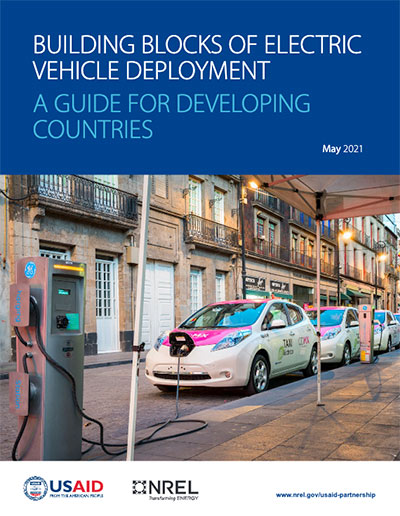Electric Vehicle Building Block Guidebook
Electric Vehicle Deployment Guidebook
Electrifying Vehicles Can Help Countries Reach Decarbonization and Mobility Objectives
Historically, the transportation sector has been powered overwhelmingly by petroleum products, but momentum for electric vehicles (EVs) is growing. Countries can use electric transportation to help fulfill numerous goals, including greenhouse gas emissions targets, local air quality goals, mobility objectives, energy security, and transportation resiliency. Vehicle electrification is a promising pathway to achieving clean energy transitions in the transport sector at-scale. As vehicles electrify, traditionally siloed electricity and transport sectors converge creating technical, institutional, and economic opportunities. To navigate this transition effectively, developing countries need to understand the foundational pillars or “building blocks” that undergird effective EV deployment. Jurisdictions with experience and mature EV markets offer useful lessons learned that may enable developing countries to overcome common roadblocks. Nonetheless, developing countries face distinct challenges as a whole, and individually, from developed countries that require careful consideration.
How To Use This Guidebook
Effective EV Deployment Is Aided by Key Building Blocks
This guidebook is intended to inform policymakers and regulators in developing countries with an interest in electrifying transport. It provides out a holistic and actionable framework for policymakers, regulators, and other decision makers in developing countries for how to plan, implement, and scale EV deployment in their jurisdictions. The “building blocks” of EV deployment address technical, institutional, or economic topics that together underpin a safe, sustainable, and efficient transition to an electrified transport sector. More information on EV basics can be found on the Greening the Grid EV Toolkit.



